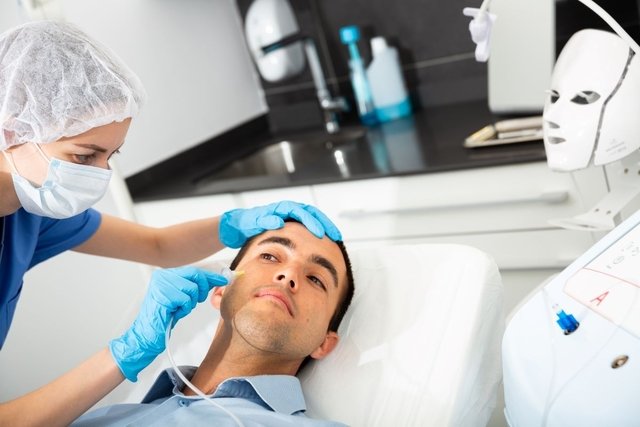Carboxytherapy is a cosmetic procedure that consists of applying carbon dioxide under the skin to treat cellulite, stretch marks, localized fat and sagging skin.
Carboxytherapy can be used combined with different types of treatments and aims to increase collagen production, combat localized fat and destroy fat cells. It can be used on the face, belly, sides, arms or thighs.
In order to obtain all the benefits of carboxytherapy and to ensure lasting results, therapy should be carried out by a dermatologist, dermatofunctional physiotherapist or qualified cosmetic professional.

Common indications
Carboxytherapy is typically indicated to treat:
- Cellulite: This technique improves blood circulation and causes a rearrangement of adipose tissue. It also increases local lymphatic drainage.
- Stretch marks: Application of gas under the stretch mark causes the skin to detach, stimulating collagen production and promoting the healing process.
- Localized fat: This procedure stimulates the breakdown of fat cells and improves blood circulation at the injection site.
- Flaccidity: The application carbon dioxide triggers the inflammatory process, which leads to the production of collagen fibers that support the skin. This ensures firm and less flaccid skin.
- Dark circles: It increases blood circulation and oxygen levels in the skin close to the eyes which reduces swelling and lightens the skin.
- Hair loss: This technique favors the growth of new hair strands by stimulating increased blood flow to the scalp.
- Acne scars: The increased blood flow to the area stimulates collagen and elastin production, which supports the skin and adds firmness, reducing the appearance of acne scars.
The number of carboxytherapy sessions needed may vary depending on the goal of treatment and area being treated. Therefore, You are advised to consult a dermatologist to assess your skin before after treatments to determine treatment duration.
How carboxytherapy works
Carboxytherapy is carried out using a fine 0.30 x 13mm needle, attached to a cylinder of medicinal carbon dioxide. This equipment is handled by a qualified professional and gas is injected after evaluating the skin and cleaning the area with 70% alcohol.
The gas causes a small detachment of the skin, filling the region with air and stimulating blood circulation. It is essential that the procedure is carried out in a safe, clinical environment and with a qualified professional.
Does carboxytherapy hurt?
Carboxytherapy can cause minor discomfort, as the application of the gas causes a mild detachment of the skin. However, the pain is temporary, and resolves after about 30 minutes. Swelling and redness in the procedure area may also appear, which also goes away on its own.
Risks and side effects
Carboxytherapy is a costmetic treatment that is associated with some risks, such as prolonged pain, lasting more than 3 days after application, as well as the the appearance of small bruises in the treated area. After the procedure, it is common to notice some side effects on the skin, such as:
- Swelling at the injection site
- Burning sensation
- Itching at the treatment site
These risks and side effects are also related to the way in which carboxytherapy is carried out. It is essential that the professional is aware not only of the possible effects it can cause, but that they are qualified and can execute the appropriate technique to reduce the risk for tissue damage and harm.
Contraindications to consider
Carboxytherapy is contraindicated in patients with autoimmune diseases, people who show signs of skin infection and inflammation, gangrene or anyone with a history of epilepsy, cardiorespiratory failure, kidney or liver failure or severe uncontrolled high blood pressure.
Furthermore, carboxytherapy should also be avoided during pregnancy.
